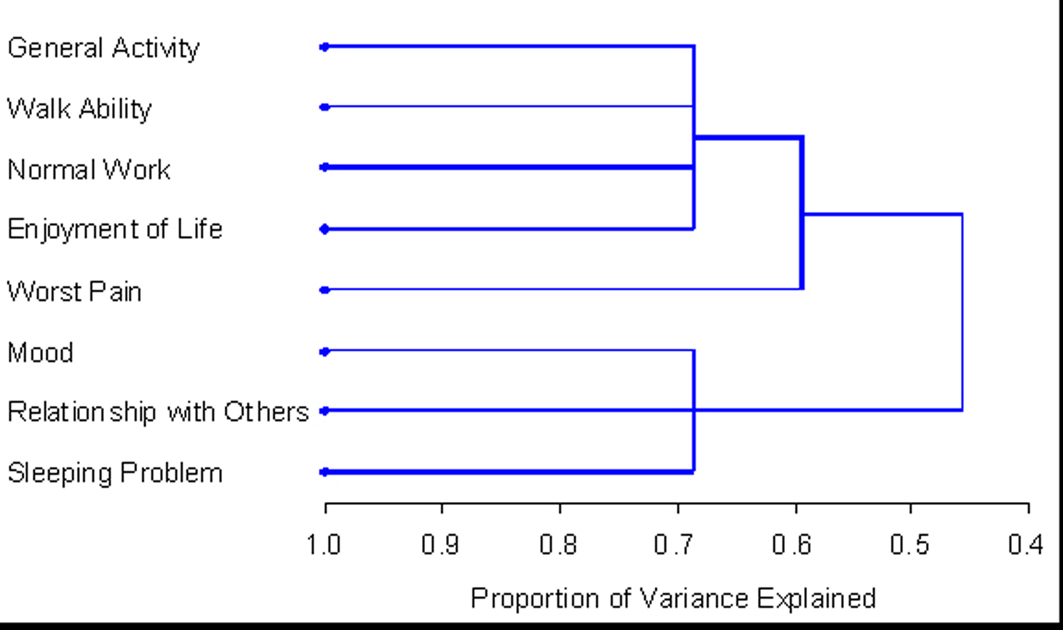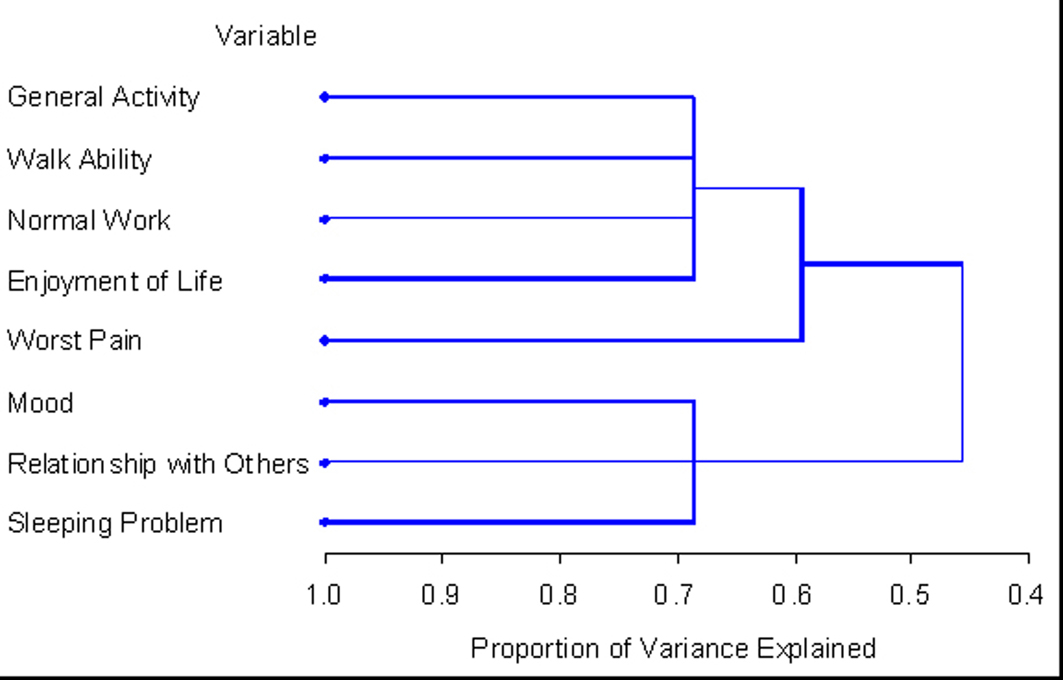
Figure 1. PROC TREE procedure generated dendrogram displaying three cluster solution and cluster hierarchy in 348 patients. One cluster (general activity, walk ability, normal work, and enjoyment) explained 53.9% of total variation; when adding worst pain, it explained up to 65.1% of total variation; when adding additional 3 items, the clusters explained up to 73.5% of total variation.

Figure 2. PROC TREE procedure generated dendrogram displaying two cluster solution and cluster hierarchy in 138 patients with non-zero record at baseline. One cluster (general activity, walk ability, normal work, and enjoyment) explained 45.6% of total variation; when adding worst pain, it explained up to 59.3% of total variation; when adding additional 3 items, the clusters explained up to 68.7% of total variation.

